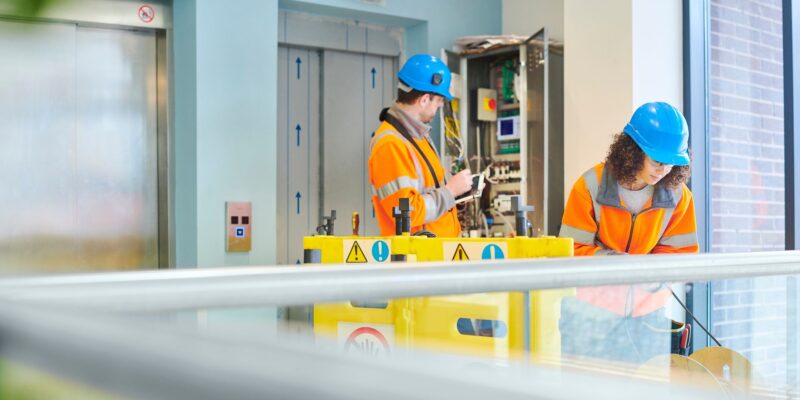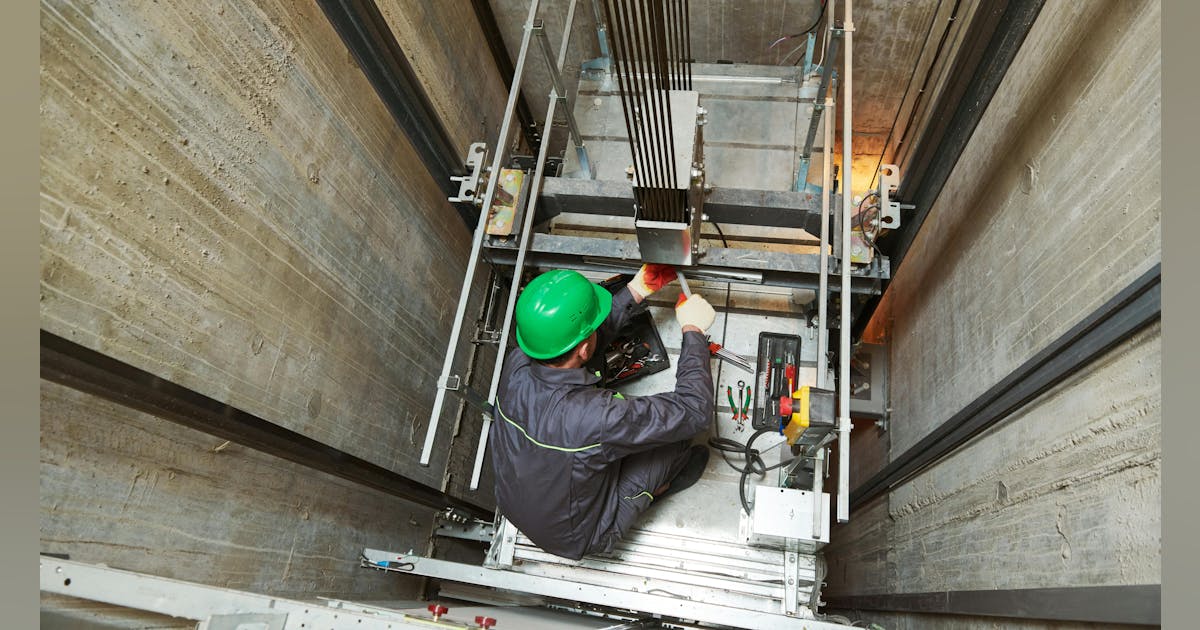Choosing the most effective Lift Maintenance Contract for Long-Term Performance
Choosing the most effective Lift Maintenance Contract for Long-Term Performance
Blog Article
Discovering the Comprehensive Actions Required for Lift Upkeep
In the realm of building upkeep, making sure the appropriate functioning and safety and security of lifts is extremely important. The complexity of elevator systems needs a meticulous method to maintenance. From regular assessments to strategic modernization strategies, an alternative sight of maintenance is vital. In the ever-evolving landscape of lift innovation and security criteria, there are comprehensive procedures that must be meticulously followed to assure optimum efficiency and compliance. By addressing key elements such as proactive maintenance timetables, safety and security checks, and emergency preparedness, a thorough understanding of the complexities included in lift upkeep can result in enhanced effectiveness and security.
Routine Assessments
When it pertains to making sure the long life and safety and security of your lift system, regular inspections are critical. These routine checks play a critical function in identifying any type of potential issues prior to they rise into significant issues, making sure the secure and smooth procedure of the lift. By carrying out routine examinations, upkeep groups can proactively deal with wear and tear, faulty elements, or any various other issues that might jeopardize the lift's performance or safety.
During these inspections, educated professionals extensively check out numerous aspects of the lift system, including mechanical components, electric systems, security features, and total architectural honesty. By finding and attending to concerns early on, these examinations aid prevent expensive fixings, downtime, or safety and security hazards, ultimately expanding the lifespan of the lift system and making certain the well-being of its individuals.
Positive Upkeep Schedules
Implementing proactive upkeep routines is crucial for making the most of the effectiveness and long life of lift systems. By adhering to a positive upkeep technique, lift owners can resolve potential concerns before they escalate into significant troubles, ultimately minimizing downtime and pricey fixings. Positive maintenance includes regular inspections, lubrication of relocating components, screening safety and security features, and changing worn elements. These scheduled upkeep tasks not only help in stopping malfunctions yet also add to maintaining the lift's performance at optimum degrees.
A well-structured aggressive maintenance schedule need to describe specific jobs, frequencies, and liable employees. It is essential to adhere to maker recommendations and sector standards when creating these routines to guarantee the lift runs safely and successfully. Furthermore, recording upkeep activities and maintaining in-depth records can give useful understandings into the lift's performance over time, aiding in making and identifying fads informed maintenance choices.

Safety And Security Conformity Checks
Guaranteeing safety compliance through complete checks is vital in keeping lift systems' dependability and securing individual health. Security conformity checks entail a thorough examination of various parts, including electric systems, mechanical components, emergency situation brakes, doors, and various other critical safety and security functions. These checks are vital to determine any type of prospective threats or malfunctions that might compromise the lift's operation and placed customers in jeopardy.
Normal safety conformity checks should be conducted by certified specialists in adherence to sector regulations and criteria. These checks help in spotting problems at an early stage, permitting prompt repair services and preventative upkeep procedures to be applied. Moreover, keeping detailed records of safety conformity checks is important for tracking the lift system's performance over time and demonstrating conformity with safety and security guidelines.
Tools Upgrades and Modernization
Enhancing lift systems through equipment upgrades and innovation is important for improving performance and security standards in vertical transportation. As innovation developments, older lift systems might come to be outdated, my review here leading to lowered integrity and prospective safety threats. By purchasing devices upgrades and modernization, structure proprietors can make certain that their lifts fulfill present sector requirements and laws.

In addition to functional advantages, tools upgrades Source and modernization tasks can likewise enhance the visual appeals of the lift, providing an extra enticing and modern-day experience for travelers. Eventually, purchasing lift upgrades and innovation is a proactive method towards guaranteeing the durability, safety, and performance of upright transportation systems.
Emergency Readiness Planning
An effective emergency preparedness plan is important for guaranteeing the safety and swift response in instance of unanticipated cases involving lift systems. Emergency situation readiness planning for lift systems includes a methodical strategy to minimize threats, guarantee guest safety, and lessen downtime throughout emergencies.
Secret components of an emergency situation readiness strategy for lifts include clear communication methods, normal training for lift drivers on emergency treatments, and routine drills to examine the effectiveness of the plan. lift engineer. Furthermore, the plan needs to describe particular functions and duties for all stakeholders included, including building administration, upkeep personnel, and emergency -responders
In case of a lift breakdown or entrapment, having a well-defined emergency situation strategy can assist in working with a effective and prompt action to make sure the safety and security and health of guests. Timely communication, access to emergency tools such as communication devices and emergency situation lights, and knowledge of discharge treatments are crucial aspects of a detailed emergency preparedness strategy for lift systems. By focusing on emergency preparedness preparation, building managers can enhance the total security and reliability of their lift systems.
Conclusion
Finally, the detailed procedures required for lift maintenance include routine evaluations, aggressive maintenance routines, safety and security compliance checks, tools upgrades and modernization, and emergency preparedness planning. These measures are necessary for guaranteeing the safety and security, reliability, and performance of lifts in various settings. By applying these procedures, lift owners can reduce the threat of accidents, prolong the life-span of their equipment, and conform with sector regulations.

During these assessments, educated professionals completely examine various elements of the lift system, consisting of mechanical parts, electric systems, safety functions, and general architectural honesty.Ensuring safety compliance through extensive checks is paramount in preserving lift systems' dependability and guarding customer health. Keeping detailed records of safety compliance checks is important for tracking the lift find this system's performance over time and demonstrating compliance with security policies.
By prioritizing emergency readiness preparation, structure supervisors can improve the general security and dependability of their lift systems.
Report this page